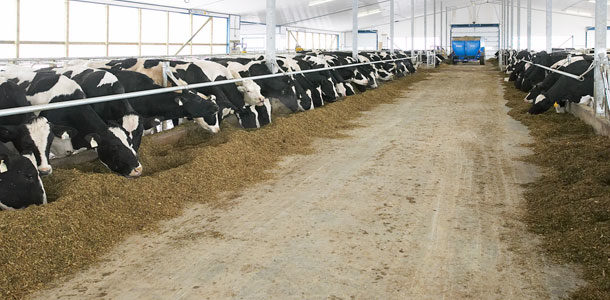At one time, Crossan was a nutritionist for up to 60 herds. A little over one year ago, he moved into his current role as business manager of the ruminant division for Shur-Gain Ontario.
While he now spends more time leading his team, Crossan still works as a nutritionist for a few herds, including Wilmarlea Farms in Oxford County, Ontario.
He has taken the lead nutritionist role on this account for the last two years. While focusing on the basics, he finds a few things about this ration that are really effective.
First of all, Wilmarlea Farms is able to keep a good amount of forage in the ration, which helps to maintain excellent effective fibre levels.
The ration is also balanced for amino acids, allowing them to keep the amount of crude protein in check, he says. By doing this, the farm is looking after cow health – and by not overfeeding protein, it is able to keep costs down.
In addition, the ration takes advantage of rumen modifiers, including Rumensin, yeast and RM 104. These rumen modifiers are part of the strategy to keep feed costs in-line and optimize rumen function.
Click here to view Milking-cow ration at Wilmarlea Farms at full size in a new window. (PDF, 224KB)
The key to this ration is that it all starts with an abundant supply of high-quality corn silage and haylage. Feeding high quality forages (as measured by potential digestibility) allows for more energy to be derived from the forage, lowering the amount of concentrates required.
Crossan uses a software program to formulate the diet. He is able to take advantage of this dynamic model’s ability to balance for carbohydrates and amino acids while incorporating some key rumen modifiers.
“We don’t have to rely on bringing in as many ingredients, which helps to lower the cost of the overall ration,” Crossan says.
In addition, the good-quality corn silage enables them to feed more to the cows. “He’s got very good intakes,” he adds.
This excellent forage quality is a result of the farm’s dedication at harvest. Wilmarlea Farms puts an emphasis on cutting hay at the proper moisture and maturity. “They’re not leaving it in the field too long,” Crossan says.
They do the same with corn silage, which makes it easier to pack and leads to better bunk management.
“They do a very good job of packing. This farm has one of the highest bunk density rates in the area,” the nutritionist notes.
The farm is also very good to work with, he says. Each year, they hold a state of the union meeting to talk about the ration, how it is working and the cost. They review all of the additives to make sure they are getting a payback on them. This meeting consists of Crossan, the producers and the veterinarian.
The team holds follow-up meetings three to four times a year to review the annual goals that were set and see if they are on track. Meanwhile, Crossan can be found walking the farm every three weeks. PD











